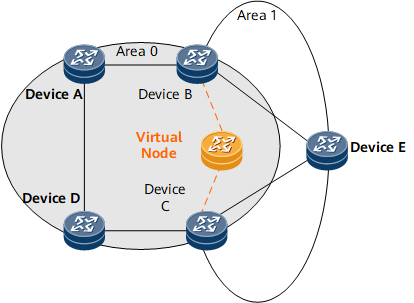Configuring OSPFv3 IP FRR
If a link fails, an OSPFv3 IP FRR-capable device can fast switch traffic to a backup link, which protects traffic and improves OSPFv3 network reliability.
Usage Scenario
As networks develop, services such as Voice over IP (VoIP) and on-line video services require high-quality real-time transmission. However, OSPFv3 takes more than 50 ms to rectify a fault, which cannot meet the requirement for real-time transmission of these services.
Nevertheless, if an OSPFv3 fault occurs, traffic can be switched to a new link only after the fault detection that lasts several milliseconds, fault notification to the routing control plane that lasts several milliseconds, new topology information generation and flooding that last tens of milliseconds, Shortest Path First (SPF) calculation that lasts tens of milliseconds, and new route notification and adding that last hundreds of milliseconds.
OSPFv3 IP FRR calculates a backup link in advance. If the primary link fails, OSPFv3 IP FRR rapidly switches traffic to the backup link without interrupting traffic. This protects traffic and greatly improves OSPFv3 network reliability.
OSPFv3 IP FRR is applicable to services that are sensitive to the packet delay and packet loss.
After OSPFv3 IP FRR is configured, the lower layer needs to fast respond to a link change so that traffic can be fast switched to the backup link. After FRR and BFD are bound, link failures can be detected rapidly so that traffic is rapidly switched to the backup link if the primary link fails.
- Enabling OSPFv3 IP FRR
- With OSPFv3 IP FRR and loop-free backup links, a device can switch traffic to a backup link immediately if the primary link fails.
- (Optional) Binding IP FRR and BFD
- Binding IP FRR and BFD enables the lower layer to fast respond to a link change so that traffic can be rapidly switched to the backup link if the primary link fails.
- (Optional) Blocking FRR on an OSPFv3 Interface
- If FRR is not required on certain OSPFv3 interfaces, FRR needs to be blocked on these interfaces.
- Verifying the Configuration of OSPFv3 IP FRR
- After configuring OSPFv3 IP FRR, you can view information about the primary and backup links.
